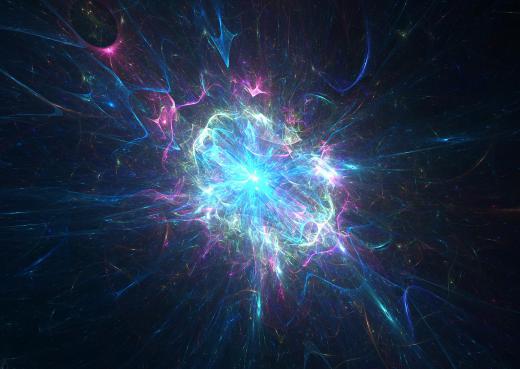What is a Quark Star?
 Michael Anissimov
Michael Anissimov
A quark star is an extremely compressed, exotic object theorized to form out of about 1% of all neutron stars, which in turn form reliably upon the collapse of stars with 1.5 - 3.0 solar masses. Quark stars have not been conclusively observed, but two promising candidates were recorded by the Chandra X-Ray Observatory on April 10th, 2002. One additional candidate has been spotted since, but more evidence is needed before the existence of quark stars can be positively confirmed with a low margin of error.
Stars with above about 1.35 solar masses, but less than 3 or so (less than the Tolman-Oppenheimer-Volkoff limit), eventually collapse catastrophically into a neutron star, a compact object the size of a small city. A single teaspoon of neutron star matter weighs one billion tonnes (over 1.1 billion tons). The gravity is so strong that the tallest "mountains" on a neutron star are only a few mm tall. The quark star is a theorized object even more compact than a neutron star. In a neutron star, it is the degeneracy pressure between neutrons that keeps the body from collapsing into a black hole - in a quark star, it is the pressure between quarks.

In a neutron star, all electrons fuse with protons to create nothing but neutrons. A neutron star can be seen a single gigantic atom, a nucleus composed solely of neutrons surrounded by a thin electron shell. In a quark star, the constituent quarks of neutrons are thrown around and recombine, morphing from the familiar up quarks and down quarks, which make up all the particles on Earth, to the more massive strange quarks, which we know only from high-energy particle accelerator experiments. A quark star can be seen as a single gigantic hadron (proton or neutron), but with many quadrillions of quarks rather than just the typical three.
When a neutron star collapses into a quark star, it is theorized to cause an event called a quark nova. The process by which quarks are deconfined from neutrons would release tremendous energy, even more than the most energetic nuclear reactions, producing possibly the most impressive explosions since the Big Bang. It may be that the mysterious gamma ray bursts (GRBs) are actually quark novae.
AS FEATURED ON:
AS FEATURED ON:











Discuss this Article
Post your comments